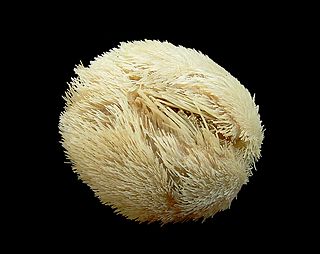
Sea urchins are spiny, globular echinoderms in the class Echinoidea. About 950 species of sea urchin live on the seabed of every ocean and inhabit every depth zone — from the intertidal seashore down to 5,000 metres. The spherical, hard shells (tests) of sea urchins are round and spiny, ranging in diameter from 3 to 10 cm. Sea urchins move slowly, crawling with tube feet, and also propel themselves with their spines. Although algae are the primary diet, sea urchins also eat slow-moving (sessile) animals. In the food chain, the predators who eat sea urchins are the sea otter and the starfish, the wolf eel, the triggerfish, and human beings.

Sand dollars are species of flat, burrowing sea urchins belonging to the order Clypeasteroida. Some species within the order, not quite as flat, are known as sea biscuits. Sand dollars can also be called "sand cakes" or "cake urchins".

Leptolepis is an extinct genus of teleost fish that lived in freshwater and marine environments from the Middle Triassic period until the Early Cretaceous. The genus is one of the earliest recognized teleost genera.

Coelopleurus is an extant genus of echinoids with fossil records dating back to the Eocene, with remains found in Europe and North America.

Eucidaris tribuloides, the slate pencil urchin, is a species of cidaroid sea urchins that inhabits littoral regions of the Atlantic Ocean. As a member of the basal echinoid order Cidaroida, its morphological, developmental and molecular genetic characteristics make it a phylogenetically interesting species.

The Echinothurioida are an order of sea urchins in the class Echinoidea. Echinothurioids are distinguished from other sea urchins by the combination of a flexible test and hollow spines. The membrane around the mouth contains only simple plates, in contrast to the more complex mouth parts of their close relatives, the Diadematoida. They are nearly all deepsea dwellers.
Skeletogenesis is a key morphogenetic event in the embryonic development of vertebrates and is of equal, although transient, importance in the development of the sea urchin, a marine invertebrate. The larval sea urchin does not resemble its adult form, because the sea urchin is an indirect developer, meaning its larva form must undergo metamorphosis to form the juvenile adult. Here, the focus is on skeletogenesis in the sea urchin species Strongylocentrotus purpuratus, as this species has been most thoroughly studied and characterized.

Psychocidaridae is a family of sea urchins in the order Cidaroida. The genus Psychocidaris is extant while the other genera are only known from fossils. The family has been in existence since the Lower Jurassic (Toarcian) and the range includes Europe, Ukraine, North America, North Africa and the West Pacific.
Pelanechinus is an extinct genus of sea urchins in the order Echinothurioida. It is placed in the family Pelanechinidae and is in the stem group of echinoids.
This list of fossil echinoderms described in 2014 is a list of new taxa of echinoderms of every kind that have been described during the year 2014. The list only includes taxa at the level of genus or species.

Diplocidaris is an extinct genus of sea urchins belonging to the family Diplocidaridae. The type species of this genus is Cidaris gigantea Agassiz, 1840.

Hemipneustes is an extinct genus of sea urchins belonging to the family Holasteridae.

Irregularia is an extant infraclass of sea urchins that first appeared in the Lower Jurassic.

Hemicidaridae is a family of extinct sea urchins characterized by large, massive, club-shaped spines.

Schizaster is a genus of heart urchins belonging to the family Schizasteridae. The type species of the genus is Schizaster studeri.

Gustave Honoré Cotteau was a French judge, naturalist and paleontologist.
Cidaris elegans is a fossil species of pencil sea urchins in the family Cidaridae. It is known from the Oxfordian stage (Jurassic) of France.
Tetragramma is a genus of fossil sea urchins known from the Upper Jurassic (Oxfordian) to the Upper Cretaceous (Turonian).
Tetragramma donaldtrumpi is a species of fossil sea urchins discovered and identified by William R. Thompson, Jr. in 2016. The specimen locality is from the Lower Cretaceous, Trinity Group, of the Glen Rose Formation near Fischer, Texas, in the United States.
Xhosacetus is a genus of ziphiid cetaceans with a single species, Xhosacetus hendeysi. It was classified from fossils found off the coast of the Kerguelen islands in 1,145 meter deep water.















